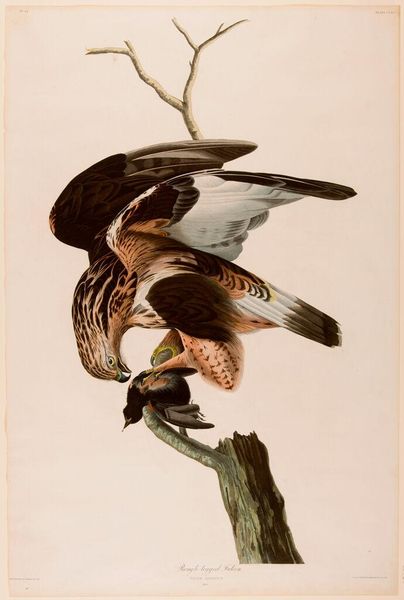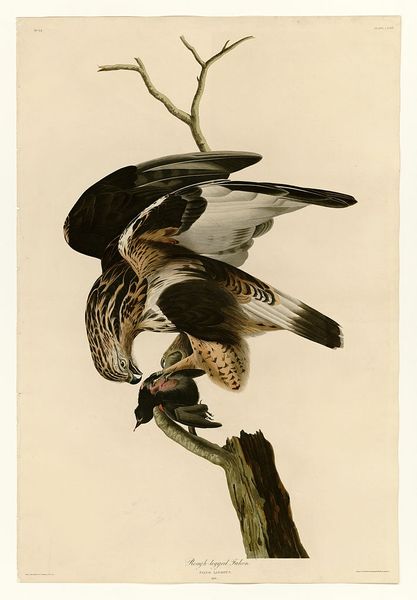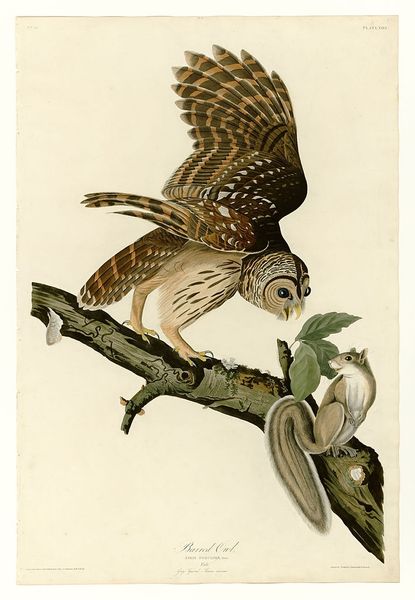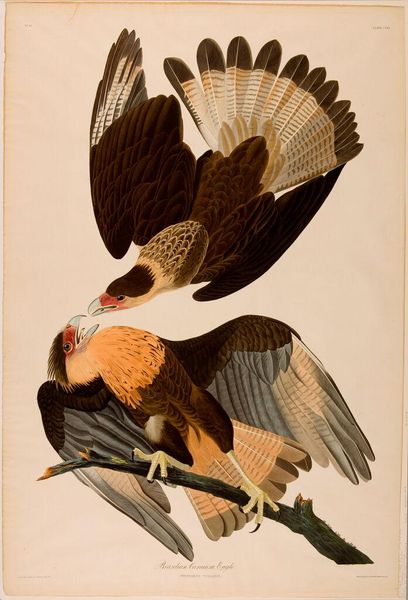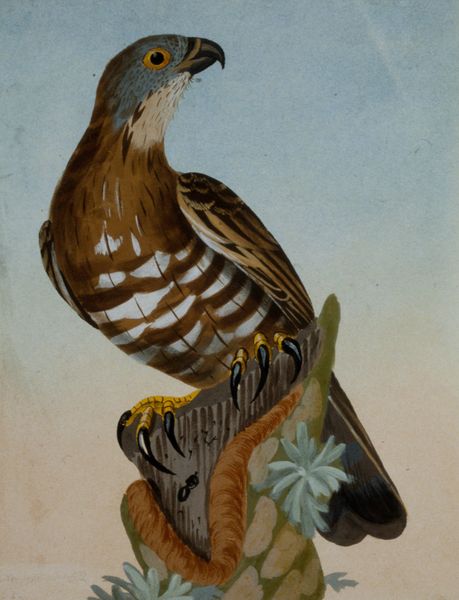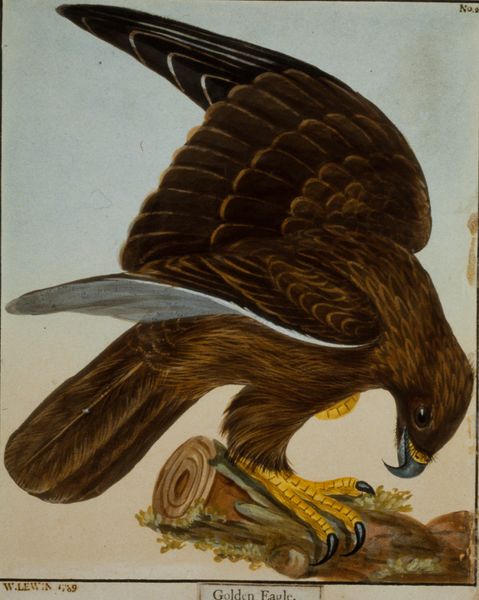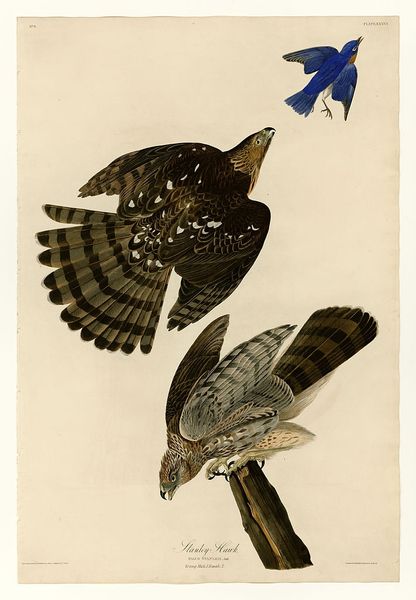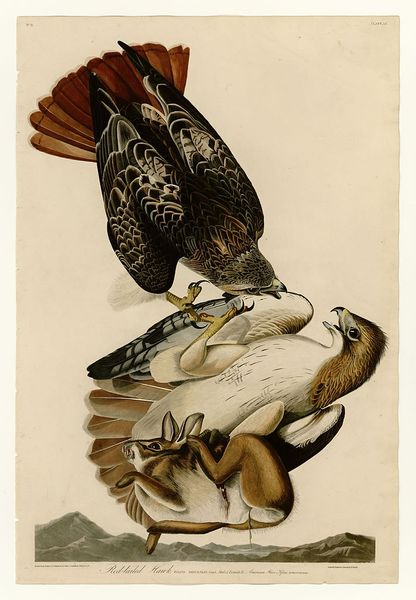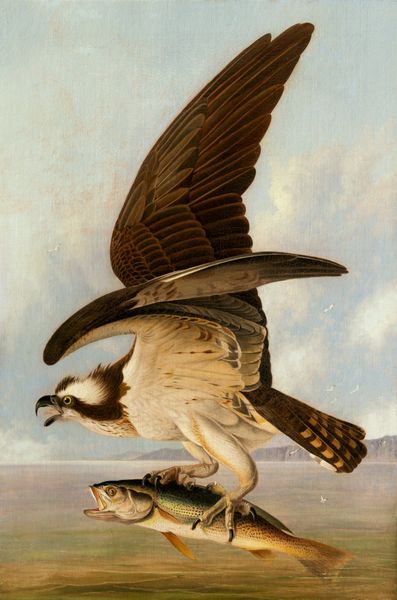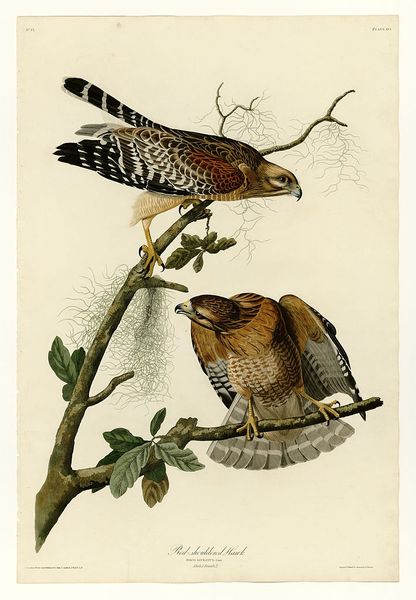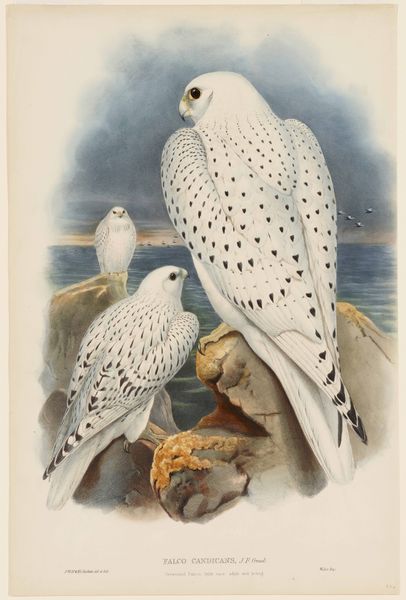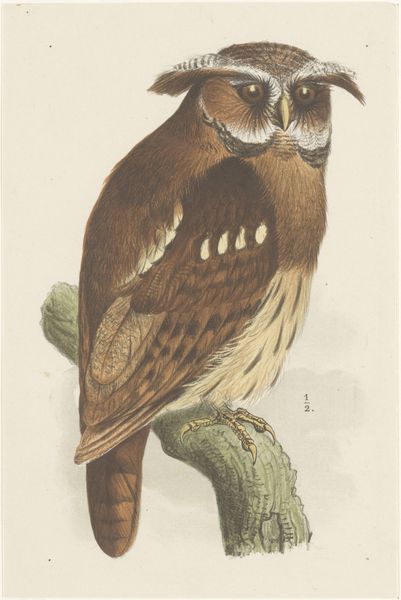
drawing, paper, watercolor
#
portrait
#
drawing
#
paper
#
watercolor
#
england
#
animal portrait
#
watercolour illustration
#
naturalism
#
watercolor
#
realism
Dimensions: 9 9/16 x 7 3/8 in. (24.29 x 18.73 cm) (sheet)
Copyright: Public Domain
Editor: This watercolor, titled "Spotted Falcon," was created in 1789 by William Lewin and is currently held at the Minneapolis Institute of Art. It strikes me as remarkably lifelike, almost photographic in its detail. What can you tell me about this work, looking at it through a more critical lens? Curator: Observe how Lewin orchestrates the interplay of light and shadow across the falcon's form. Note, too, the texture he achieves through layering and blending pigments. The formal elements guide our gaze. Does the composition appear balanced to you, or do you sense a certain tension in its asymmetry? Editor: I see the asymmetry, particularly with the outstretched wing, gives it a sense of dynamic energy. It's balanced, but active. Is that intentional, perhaps to capture the bird's essence? Curator: Precisely. Lewin has carefully constructed the falcon's pose to emphasize the innate qualities of the creature – its potential for swift movement and powerful action. Semiotically, we might interpret the upward thrust of the wing as indicative of ambition or aspiration. How does Lewin employ line to define the contours of the falcon? Editor: I notice the lines are delicate and precise, capturing the feather patterns in great detail. It gives the image incredible clarity and sharpness. Curator: The use of line contributes significantly to the overall effect of realism and helps to differentiate various textures within the work. The composition relies on that relationship. Now consider the formal relationship between color, shape, and space within the frame. What do you make of it? Editor: I see. I hadn't considered the careful selection of colors to model form and highlight details. Seeing your reading highlights that formal control creates its specific dynamism. Curator: Indeed, by analyzing these formal elements we uncover the artist's methods, appreciate their choices, and hopefully, have added another perspective to our encounter with art.
Comments
No comments
Be the first to comment and join the conversation on the ultimate creative platform.

